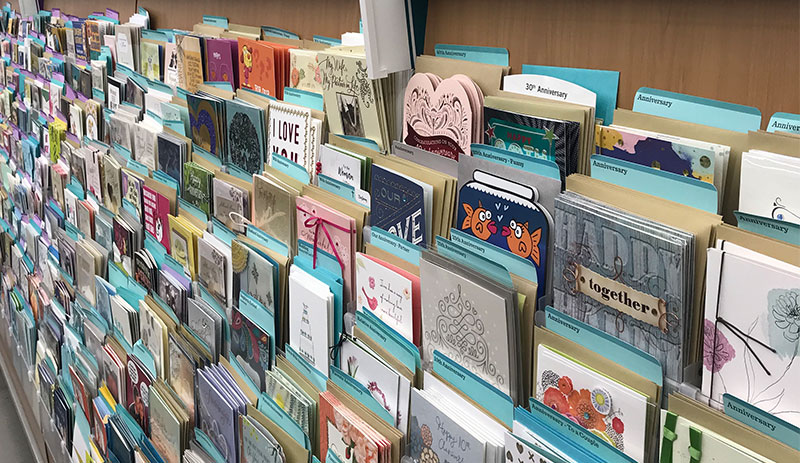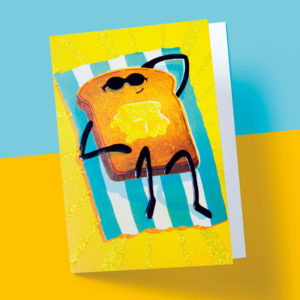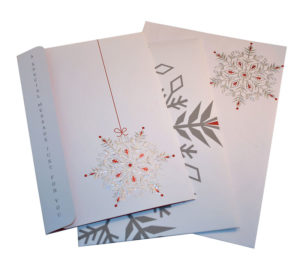
By Hallie Forcinio, contributing writer
PostPress
Americans spend between $7 and $8 billion on approximately 6.5 billion greeting cards each year, according to Facts & Stats 2019 from the Greeting Card Association. With prices from $0.50 to $10, there’s a price point for every consumer. Cards at the top of the scale typically employ special techniques, intricate designs and new technologies and innovations – such as the inclusion of sound chips and LED lights.
As a result, the greeting card market is strong. According to the Greeting Card Association, seven out of 10 card buyers surveyed consider greeting cards “absolutely” or “almost” essential. Eight out of 10 of these buyers expect to continue to purchase at current levels going forward. Of the balance, twice as many card buyers plan to “increase” purchases than will “decrease” purchases in the coming year.
Online purchases appear to be capturing market share. The Facts & Stats 2019 sheet reports younger card buyers and those who are more technology savvy are most engaged in buying paper greeting cards online.
 “Some will argue that the sales of cards online have increased the unit numbers of cards purchased,” says David Hutchison, CEO/managing member at BrightMARKS. So overall sales have not been affected, but the rise in online purchasing has impacted brick-and-mortar retailers. As a result, the amount of retail space devoted to greeting cards has shrunk. “This has pushed the move to higher-priced cards so that the value per square foot at retail remains acceptable,” explains Hutchison.
“Some will argue that the sales of cards online have increased the unit numbers of cards purchased,” says David Hutchison, CEO/managing member at BrightMARKS. So overall sales have not been affected, but the rise in online purchasing has impacted brick-and-mortar retailers. As a result, the amount of retail space devoted to greeting cards has shrunk. “This has pushed the move to higher-priced cards so that the value per square foot at retail remains acceptable,” explains Hutchison.
Although it may seem counterintuitive, social media seems to be exerting a positive impact on greeting card sales. According to the Facts & Stats 2019 sheet, “Most people now acknowledge many more birthdays than ever before because of social media, but they aren’t necessarily sending fewer cards as a result.”
A report from Sundale Research, State of the Industry: Greeting Cards in the U.S., agrees, noting, “Social media and other paperless communication technologies, once thought to be the demise of the greeting card industry, are keeping consumers more connected than ever before. This has been a positive trend as the industry is taking advantage of the increase in personal connections and is embracing technology to keep greeting cards relevant in today’s fast-paced society.”
The Greeting Card Association’s Facts & Stats 2019 sheet explains the tradition of giving greeting cards as a meaningful expression of affection continues to be deeply ingrained in children and young people. As a result, the practice of sending or giving cards is likely to continue as they grow into adulthood and become responsible for managing their own important relationships.
“Today’s younger shopper still is buying cards,” reports Rick Ruffner, president of Avanti Press. “They recognize the value of having something tangible, something that can be kept,” he explains, equating the difference between a card and a social media greeting to the difference between drive-through food and a home-cooked meal. “It takes longer, but is more satisfying,” he says.
“Technological advances are not only helping to provide more personalized greetings, they are creating a ‘wow factor’ that keeps greeting cards up-to-date,” according to the Sundale Research report. The report notes, “Advanced technology has led to improvements in greeting cards with sound, pictures and light. Not only is there a wide variety of songs and other sound clips to choose from, but recordable products have become very popular in the wake of the personalization trend.”
Other popular embellishments include embossed images, glitter, flocking, lenticulars, contrasting spot finishes, and foiling and metallic finishes, especially in copper and rose tones, iridescent hues and multiple colors.
“Lending itself to almost every design, style, occasion and event, there’s nothing that foiling can’t elevate,” comments Emma-Lee in “Your Definitive Guide to Greeting Card Trends for 2019,” a Nov. 12, 2018, blog post on printedblog.
However, embellishments should add value and create a visually stronger card. “Embellishments should help tell the story,” says Ruffner. He explains, “People don’t buy cards because of embellishments, but embellishments support the overall impact. Embellishments done properly help tell the story with an exclamation point.”
Hutchison agrees, noting, “It is fortunate that the finishing industries have a number of approaches to offer all of these effects. Every process method has a demand and every process method has a value to offer.”
Sustainability also is important to today’s card purchasers. The Sundale Research report notes, “Consumers have a renewed interest in eco-friendly items and are very conscious of planet-saving strategies like recycling. Anything considered organic or ‘green’ is extremely popular.” Ruffner says, there is more interest today in “what goes into the product, how it’s made, what it’s made of and ultimately what happens to it after it’s sent.”
Tomorrow’s cards will be more personalized than ever. Hutchison predicts, “The definition of ‘greeting card’ will broaden. Card givers will be looking for a greeting card with a perceived value to replace traditional gifts, gift cards will expand into the space of greeting cards and become more integrated into the culture of card giving. All of this will result in greater value for the printing and finishing industry.”
For the full report on State of the Industry: Greeting Cards in the U.S. from Sundale Research, visit http://sundaleresearch.com/consumer-products/state-of-the-industry-greeting-cards-in-the-u-s/. For the Facts & Stats 2019 sheet, contact the Greeting Card Association at www.greetingcard.org.
Greeting Card Facts*
 Most Popular Occasion: Birthday
Most Popular Occasion: Birthday
Most Popular Seasonal: Christmas
Card Purchases: 80% are bought by women
Shopping Habits: Women spend more time choosing a card and are more likely to buy several cards at once.
*From Facts & Stats 2019, Greeting Card Association

